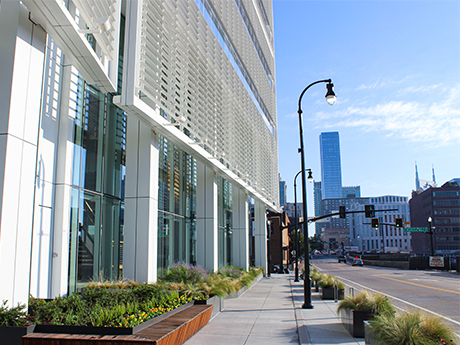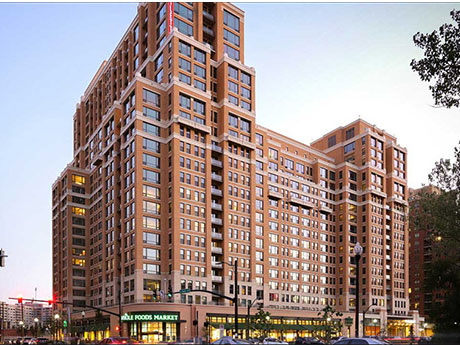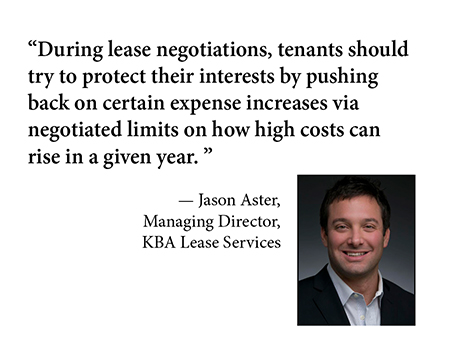WASHINGTON, D.C. — A variety of Sun Belt markets once again lead the “top markets to watch” in 2023 for overall real estate prospects, with Nashville ranking No. 1 for the second consecutive year in the annual Emerging Trends report issued by the Urban Land Institute (ULI) and PwC US. Using proprietary data and insights from more than 2,000 real estate industry experts across 80 tracked markets in the United States and Canada, Emerging Trends pegged the Music City as a “supernova” market due to its evolution from an 18-hour city to a “24-hour metropolis.” In the past couple years, Nashville has attracted Amazon and Oracle to build new office campuses, and two weeks ago the NFL’s Tennessee Titans and the Metropolitan Government of Nashville and Davidson County agreed to terms for a new $2.1 billion football stadium in the East Bank district that could attract events such as the Super Bowl and College Football Playoff. The private investment is in response to the Nashville MSA posting a 21 percent population growth rate in the past decade, according to the latest U.S. Census data. The Emerging Trends report noted that the pandemic has reinforced these migration trends as workers from …
Features
Executive Q&A: Multifamily Building Costs Rise Up to 40 Percent in a Year, Says R&O Construction’s Eric Stratford
by Jeff Shaw
OGDEN, UTAH — Multifamily builders face many challenges, including schedule delays, supply chain interruptions, fluctuating material costs and workforce shortages. Construction companies are exercising creativity in tackling these issues to meet high demand. Many firms that build commercial properties argue that smart planning and collaboration among architects, engineers and construction firms are the best ways to weather the storm. REBusinessOnline, a sister publication of Multifamily & Affordable Housing Business, recently interviewed Eric Stratford, director of business development and pre-construction services at R&O Construction, about today’s construction landscape. REBusinessOnline: Tell us about your company. Eric Stratford: R&O Construction was founded in 1980, and we are proud to say that our first client over 42 years ago is still a client today. We are headquartered in Ogden, Utah, with full-service offices in Salt Lake City and Las Vegas. R&O Construction currently employs approximately 185 employees. Some of our recent projects include Senior Living on Washington, an affordable seniors housing community in Ogden; Ascent 1791, a LEED Gold Certified apartment community in Park City, Utah; and The Canyons Employee Housing Facility, a project ordered by Vail Resorts to provide housing for their employees. REBusinessOnline: In which markets and/or regions are you most active? …
AcquisitionsArbor Realty TrustContent PartnerFeaturesMidwestMultifamilyNortheastSoutheastTexasWestern
Multifamily Opportunity Matrix Reveals Most Promising Markets for Investors, Developers
By Arbor Realty Trust Inflationary environments set many investors’ minds to thinking about multifamily properties, which have tended to perform as well or better than other property types in the face of economic headwinds. Product type is no guarantee of success, however, and careful site selection is essential to ensure a project will have the renter demand and pricing power the owner needs to succeed. Arbor Realty Trust, in partnership with Chandan Economics, developed the opportunity matrix featured in Arbor’s Top Opportunities in Large Multifamily Investment Report 2022. The opportunity matrix helps clients navigate the nation’s apartment markets, enabling them to compare relative strengths from one metro to the next and identify those offering the greatest potential for development or investment. Its ranking system, which analyzes eight key categories, found the top three U.S. metro markets for large multifamily investment in 2022 are San Antonio, Kansas City and Las Vegas. “Reviewing what made these communities rise to the top of our 50-metro ranking will demonstrate how investors can use the matrix to compare the climates of opportunity in the markets in which they operate, or to suggest new fields of opportunity for their next venture,” said Matt Maison, vice president …
CHICAGO — As shovel-ready projects get put on hold, seniors housing developers are looking 24 months ahead, hoping that by then the economic outlook will have improved. For now, they worry about a possible recession and rising costs for everything from debt financing to building materials as they turn their immediate focus to repositioning opportunities. “The industry has been hit with macro-economic shocks,” said Adam Heavenrich, managing director at Heavenrich & Co., a Chicago-based investment brokerage firm. “What you hear is that if you’re developing now, you’re crazy.” Heavenrich gave these opening remarks as moderator of a panel discussion on development at France Media’s sixth annual InterFace Seniors Housing Midwest conference, held Oct. 20 in Chicago. The day-long event featured six panel discussions on topics relevant to industry stakeholders, along with networking opportunities. The development panel included experts who analyzed the smartest plays for the upcoming year. They recounted a growing list of barriers to new construction. The industry is still clawing its way back from the occupancy declines due to the pandemic. Seniors housing occupancy stood at 82.2 percent at the end of the third quarter of 2022, according to data analytics firm NIC MAP Vision. Inflation, last pegged …
Fiber networks built with multifamily properties in mind offer network resilience while maximizing ROI for owners and operators. Well-constructed fiber networks are at the heart of meeting and exceeding residents’ growing Internet needs, especially when work-from-home culture and the constant need for online connection have made Internet slowdowns and downtime unacceptable for end users. Fiber can also strengthen connectivity across multifamily properties, shoring up the Wi-Fi services residents have come to know and on which they’ve come to depend. How does a national fiber network integrate with multifamily properties? By focusing just on the needs of the multi-dwelling unit (MDU). “Instead of building out 200-mile routes of duct and fiber, we build out ‘miracle miles’ in densely populated MDU areas. From that point, we’re able to easily grow or expand out from that area,” says Michael O’Linc, president of fiber services & campus communications at Pavlov Media. O’Linc stresses the importance of a more planned, methodical approach for MDUs. A network that serves multifamily buildings must be a network focused on backups and fail safes. The “miracle mile” method creates a main line with laterals — creating a ring shape as it expands. This approach to fiber makes networks easier to …
By Ben Johnson, founder & president, Spruce It’s no secret that the U.S. economy is in the midst of a very turbulent period. Businesses of all sizes and types are experiencing adverse pressures like never before and seeking ways to cut costs and increase revenue wherever possible. The real estate market, including the multifamily industry, is no exception. With fewer people able to buy homes due to skyrocketing mortgage rates and minimal inventory for sale, more people are turning to apartments. As renting by necessity grows, residents are looking for the highest value from their rental experience. Consequently, multifamily owners and operators are now putting a bigger emphasis than ever on tenant retention by asking why high retention rates are important, how they can be maintained and what some alternative options are. Why Retention Matters Many of the hottest multifamily markets in the country have seen annual rent increases well over 20 percent over the last year, and several markets have even seen increases exceeding 30 percent. While this growth is a boon for existing owners, it begs the question of whether these increases are sustainable, or if the next several years will usher in below-trend increases. Why is this …
RICHARDSON, TEXAS — Demand for apartments in 2021 and early 2022 was booming, with new renters filling apartments at record levels. In the third quarter, however, most markets experienced a “surprisingly big slowdown in leasing traffic,” according to RealPage, a data analytics and property software company based in Richardson. Negative demand means that in the third quarter of 2022, more tenants moved out than in. According to Realpage, this slowdown has caused a decrease in demand, with negative 82,095 units absorbed, bringing year-to-date net demand down to negative 47,143 units. This is during a time that is typically a seasonally strong leasing period. Effective asking rents fell to negative 0.2 percent month-over-month in September, the first time effective asking rents have fallen since December 2020. Apartment demand in the third quarter of 2022 registered as negative in 119 of the nation’s 150 largest metros. Most of these metros only saw mild decreases in demand, but a handful of markets did see notable decreases in apartment occupancy of up to 1.5 percent, including cities such as Phoenix and Las Vegas and some Florida markets, including Tampa, Fort Lauderdale, Orlando, Jacksonville and West Palm Beach. RealPage emphasizes that the U.S. apartment market …
Can you dig it? Possibly, but site civil engineers can help determine if construction can rock on without running into rocky situations. Thorough site civil due diligence is the foundation for developing a project with minimal delays. Keeping land development projects moving forward — especially during construction — requires highly informed due diligence processes and expertise when it comes to approvals and plans. Site civil engineering design with constructability in mind can support general contractors while streamlining the overall bidding and construction process. But what are best practices when it comes to ensuring a successful project? REBusinessOnline spoke to two experts who specialize in high-quality construction documents: Benjamin Plumb, P.E. project manager, and Keith Simpson, director of engineering, work for Bohler, a land development consulting and technical design company. You Never Know What You’ll Find Before You Dig — However, These Tips Can Help Uncertainty is part of any development project, but Simpson outlines two scenarios that make up the majority of the challenges he sees: 1. Existing underground utilities that are not reflected in plans. 2. Soils that differ from what was expected from the geotechnical report. In some cases, slowdowns are unavoidable and will cause delays, but due diligence can …
Affordable HousingContent PartnerDevelopmentFeaturesLoansMidwestNortheastSoutheastTexasWalker & DunlopWestern
Shortage of Tax Credits, Higher Interest Rates Plague Affordable Housing
Forty-year-high inflation rates that are outpacing wage growth and eating away at personal income are exacerbating already outsized resident demand for affordable housing financed by the federal Low-Income Housing Tax Credit (LIHTC) program. But it seems that obstacles to supplying new units to meet that demand are only multiplying. Those range from a shortage of housing tax credits needed to fund new supply to resistance to multifamily development at the local level. Meanwhile, higher mortgage rates are making home buying more difficult and expensive. In turn, that is creating more apartment renters, thereby putting upward pressure on rental rates. In September, for example, the average monthly rent price nationwide hit $1,759, an increase of 7.8 percent from the prior year, according to Realtor.com’s monthly rental report. That’s also nearly 25 percent higher than September 2019, the organization reports. What’s more, from 2015 through 2020 — long before mortgage rates spiked — the U.S. lost 4.7 million apartment units with rents less than $1,000 per month, according to U.S. Apartment Demand Through 2035, a report by the National Multifamily Housing Council and National Apartment Association. “Demand for affordable units is only going to become more acute between now and the end of …
By Jason Aster, managing director, KBA Lease Services Inflation hit 9.1 percent in June, the fastest pace of escalation in more than 40 years as measured by the Consumer Price Index (CPI), and hasn’t retreated much since then. And while businesses are factoring soaring prices into many decisions, they should make sure to keep a close eye on their leases. Most leases contain additional rent provisions designed to protect landlords from inflationary increases in operating costs over time. Accordingly, increases in operating costs will generally be passed on to tenants over the course of their lease terms. However, sharing the burden of inflationary increases should be fair to both tenants and landlords. During lease negotiations, tenants should try to protect their interests by pushing back on certain expense increases via a negotiated limit on how high costs can rise in a given year. Controllable or Not? A typical lease requires tenants to pay for certain operating expenses, many of which are affected by inflation. For some of them, such as taxes, insurance and utilities, there is not much landlords can do to control these costs, which are determined by municipalities, insurance companies and utility providers. Accordingly, both landlords and tenants …











